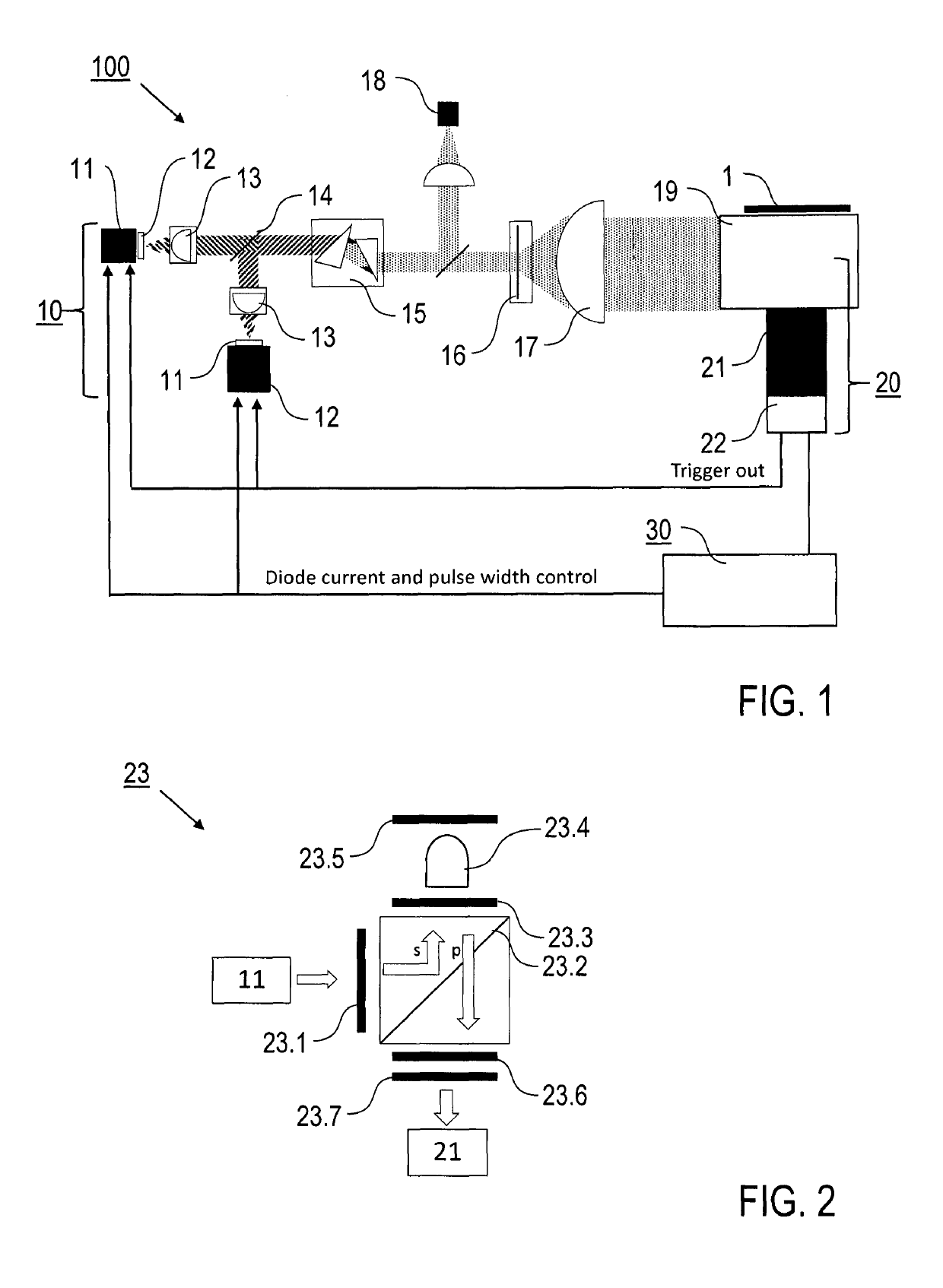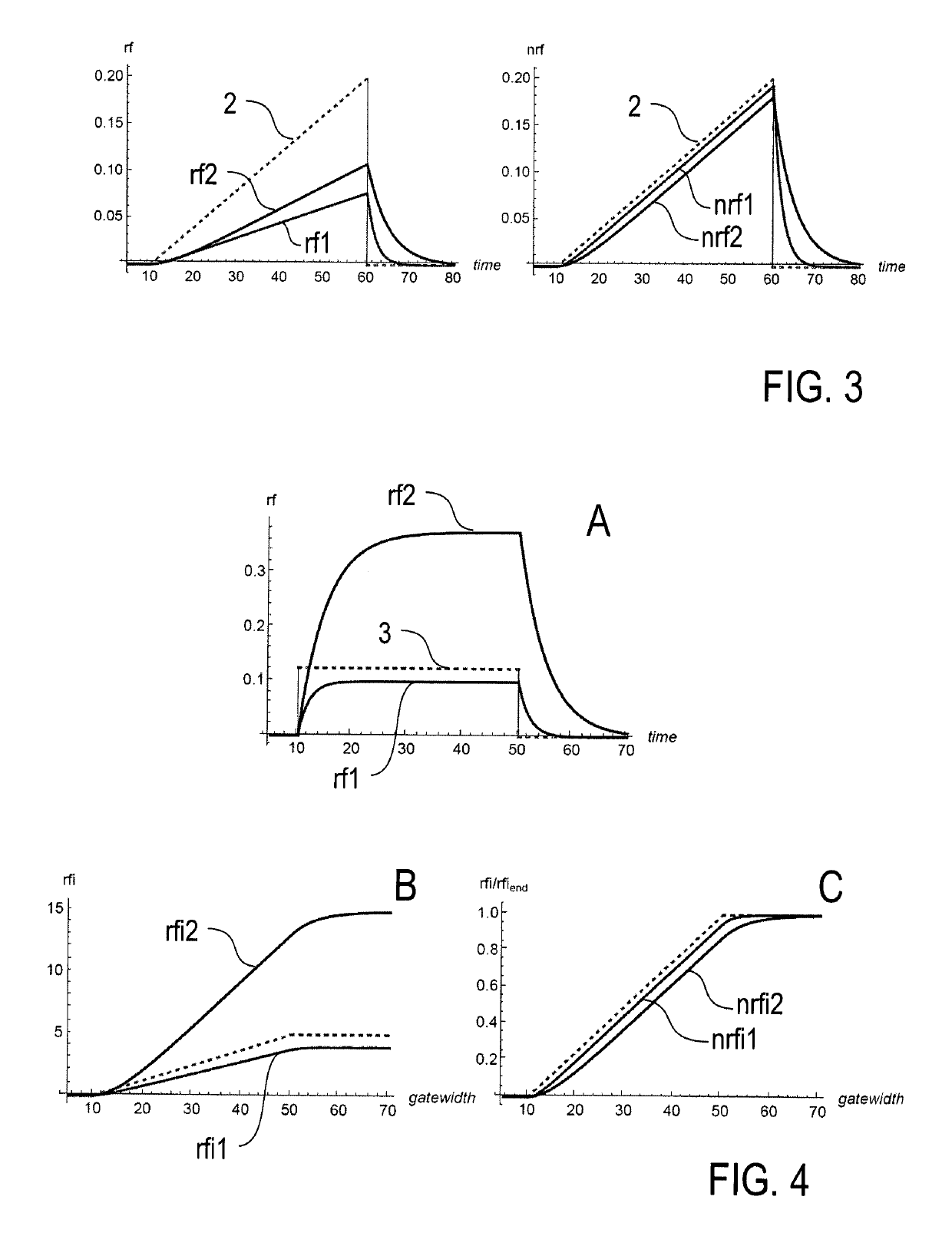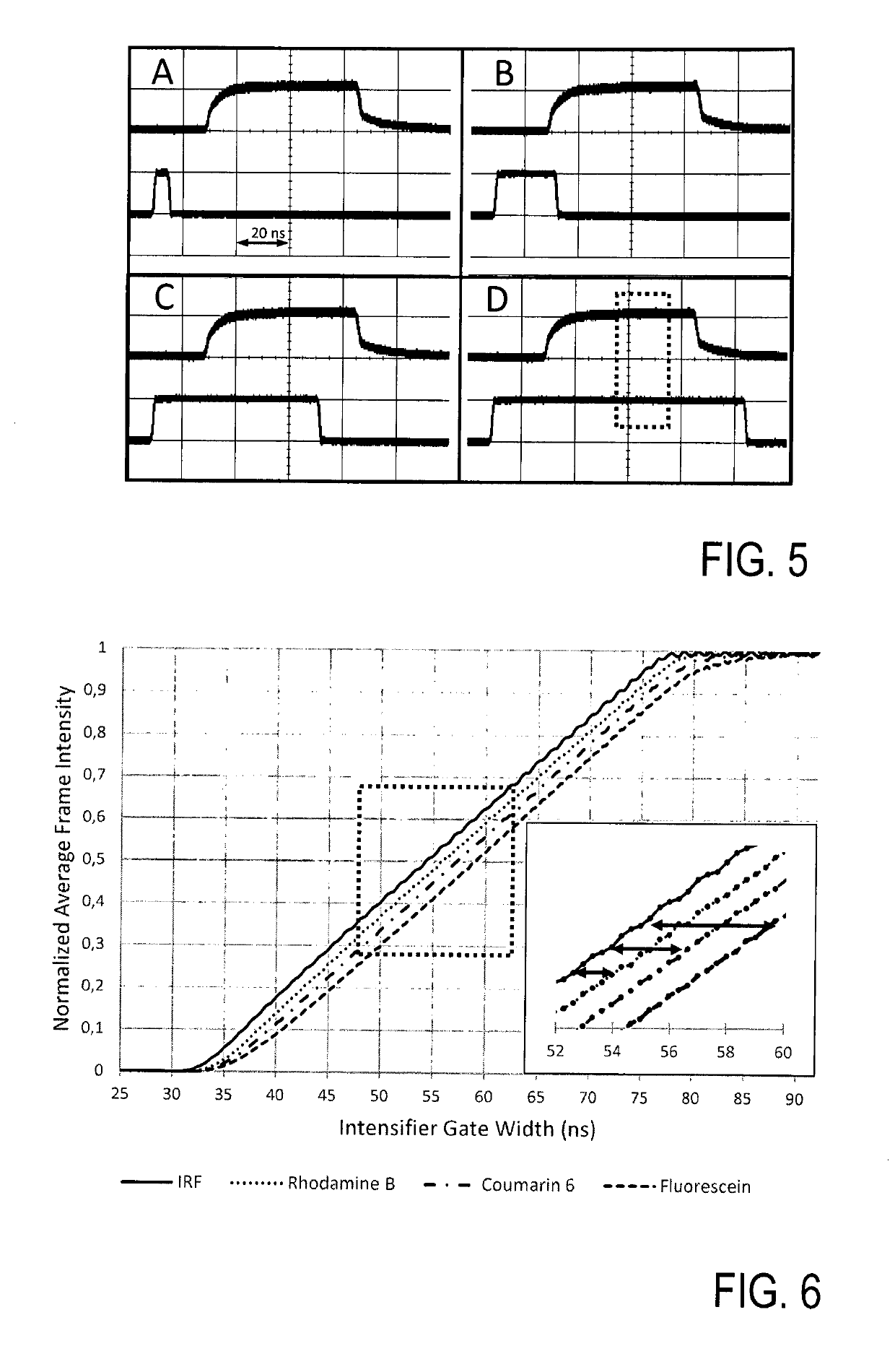Emission lifetime measuring method and apparatus for measuring a mean lifetime of electronically excited states
a technology of electronic excited states and measuring methods, applied in the direction of instruments, fluorescence/phosphorescence, analysis by material excitation, etc., can solve the problems of requiring considerable computation time, complex mathematical procedures based on iterative minimization, and requiring arbitrarily complex shapes, etc., to achieve significant facilitation of the analysis of the response function section, greatly reduce the complexity of signal processing, and increase the effect of speed
- Summary
- Abstract
- Description
- Claims
- Application Information
AI Technical Summary
Benefits of technology
Problems solved by technology
Method used
Image
Examples
first embodiment
[0057]According to FIG. 3, the dotted line represents the ramp section 2 of an excitation light pulse according to the invention. In the equilibrium excited steady-state of sample 1, the time-dependent emission response rf of the sample has a linear response function section (linearly increasing ramp shape) as well. Drawn lines rf1 and rf2 in FIG. 3A illustrate two examples of samples having a fluorescence lifetime of 2 ns (rf1) and 5 ns (rf2). Due to the longer fluorescence lifetime, the linear response function section of emission response rf2 has a steeper slope and a higher final value than the linear response function section of emission response rf1. Emission responses rf1 and rf2 are displaced relative to the excitation light pulse and relative to each other. The displacement, which is further demonstrated with the normalized detector response function in FIG. 3B, is linearly dependent on the mean lifetime of the sample, being equal to the lifetime upon comparison with a refe...
second embodiment
[0069]According to FIG. 4A, the dotted line represents the pulse section 3 with constant intensity of an excitation light pulse according to the invention. The extended rectangular excitation light pulse 3 provides a rapid increase in excitation energy followed by a constant level which is maintained for an interval corresponding to several times the lifetime(s) being measured. The response function curves immediately after the initial rise and final fall of the excitation light pulse 3 are exponential and provide additional data for obtaining the lifetimes according to conventional techniques.
[0070]Drawn lines rf1 and rf2 in FIG. 4A illustrate two examples of samples having a fluorescence lifetime of 2 ns (rf1) and 5 ns (rf2). In the equilibrium excited steady-state of sample 1, the time-dependent emission response rf of the sample has a flat shape (FIG. 4A), while the time-integrated emission responses rfi1, rfi2 of the samples which are actually recorded n the experiment each hav...
third embodiment
[0082]Pulse shapes other than rectangular, i.e. with different shapes (finite rise times), can also be used in the invention (third embodiment). The response curves and the analytical mathematical expressions for the corresponding rfi curves have been computed for numerous examples. In all cases, the same behaviour of the rfi signals is observed after attainment of the steady state, i.e. as in FIG. 4B for the rectangular pulse.
[0083]With a practical measurement according to the second embodiment (using the pulse section 3 with constant intensity), the integration is started before the excitation light pulse 3, then keep incrementing the gate width (always starting from the same point) until the excitation is completed (end of the excitation light pulse). With 100-200 points (frames) one defines the integrated response function in detail. In the case of the rectangular excitation light pulse 3, the immediate “dynamic response” (population kinetics of the excited state) takes place on...
PUM
| Property | Measurement | Unit |
|---|---|---|
| time resolution | aaaaa | aaaaa |
| time resolution | aaaaa | aaaaa |
| time resolution | aaaaa | aaaaa |
Abstract
Description
Claims
Application Information
 Login to View More
Login to View More - R&D
- Intellectual Property
- Life Sciences
- Materials
- Tech Scout
- Unparalleled Data Quality
- Higher Quality Content
- 60% Fewer Hallucinations
Browse by: Latest US Patents, China's latest patents, Technical Efficacy Thesaurus, Application Domain, Technology Topic, Popular Technical Reports.
© 2025 PatSnap. All rights reserved.Legal|Privacy policy|Modern Slavery Act Transparency Statement|Sitemap|About US| Contact US: help@patsnap.com



